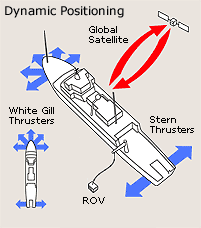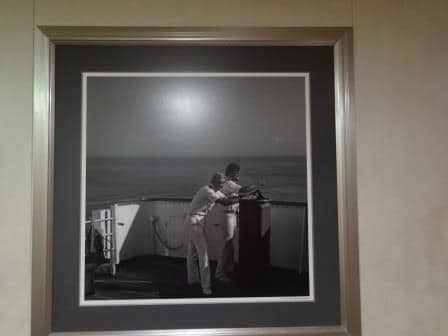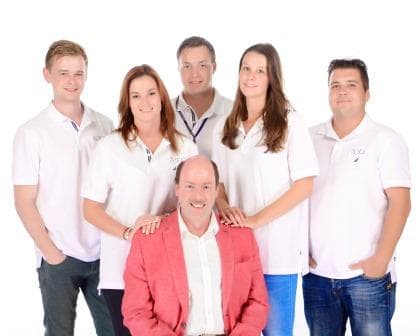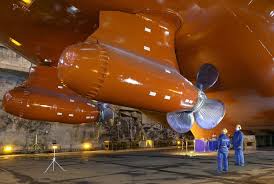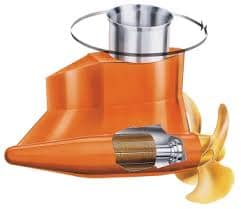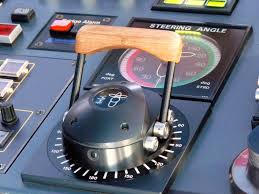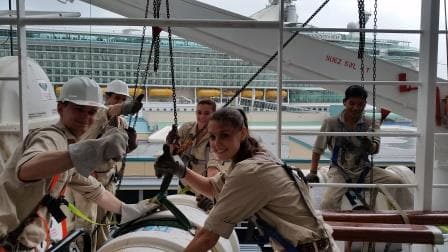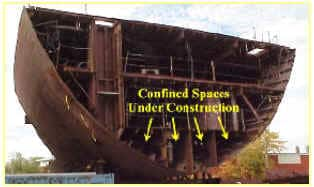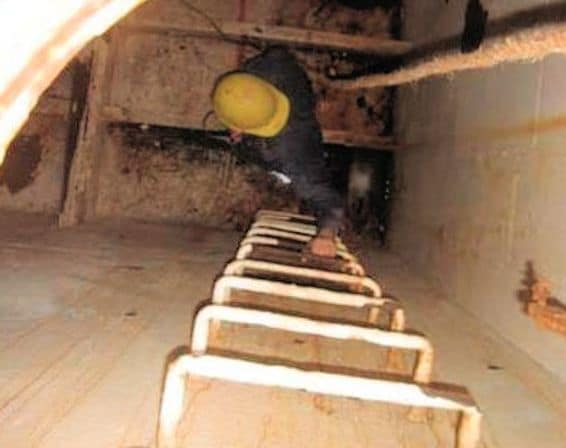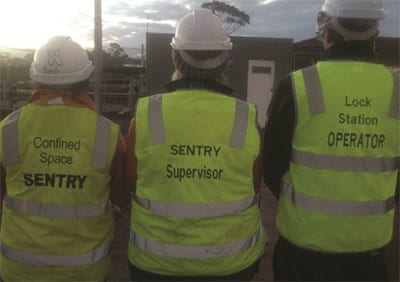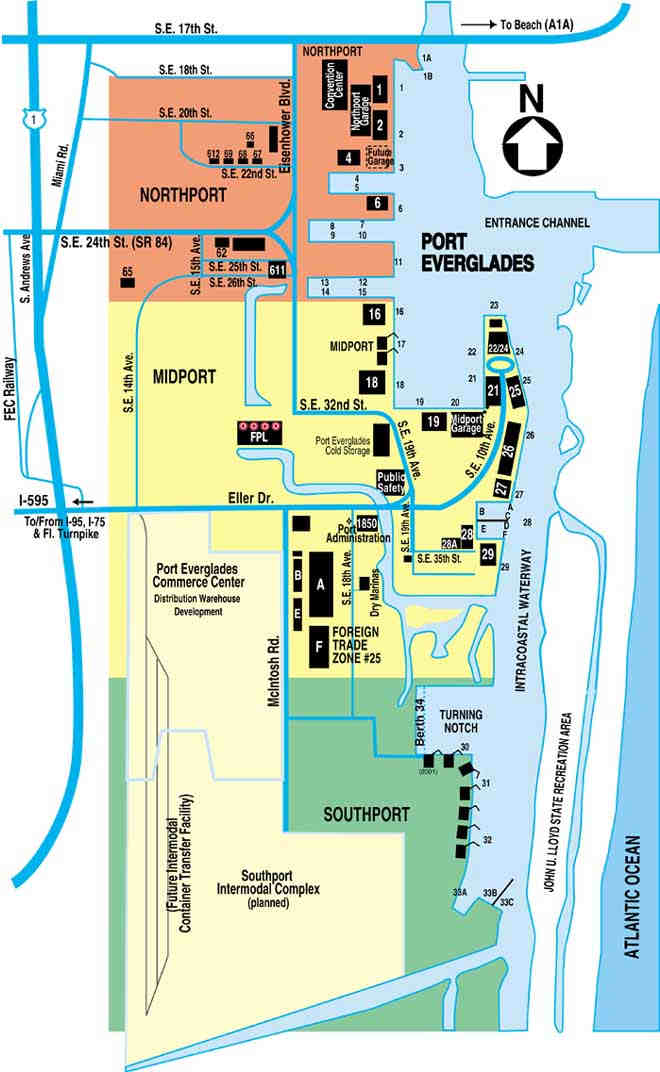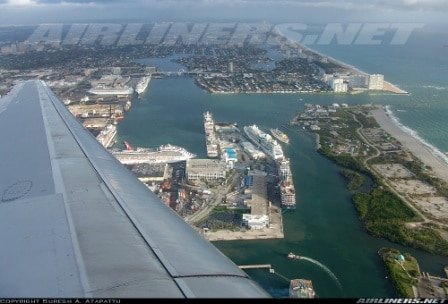Today we are sailing in the North Atlantic on our way from Half Moon Cay to Gustavia where we should arrive tomorrow sometime before 12.00 hrs. Hence the late stay in the evening as I mentioned yesterday. The route is taking us North of the remainder of the Bahamian Islands and then later also North of the Turks and Caicos which we will visit next week again.
The weather was a real mixture today. We still had the tail of a weather system laying over us which brought dark skies and rain in the morning but in the early afternoon it became nice and sunny. Good thing as well as with this charter we have a real party crowd on board and an outside disco which is a major part of the whole happening. You cannot say that these guests spend their time in their cabin or tucked away with a good book in a quiet corner; it is go go go. Even the bingo had at least 200 people in attendance. Numbers I have not seen since the early 90’s. But then it is not a regular bingo but more a sort of comedy – bingo caller show and where most of the commentary is mostly NSFW. Still a grand time is being had by all and the bars are doing big business.
We are going straight against the swell generated by the trade winds and on occasion the Nieuw Amsterdam finds a bump in the road. It is quite interesting to compare all the HAL ships with each other as they all behave slightly different, although they are all an evolution from the basic S class design. The R class (Rotterdam, Amsterdam, Volendam, and Zaandam) is a stretched version but reacts different to the weather as the S class as the ships are longer due to the extra staircase in the middle.
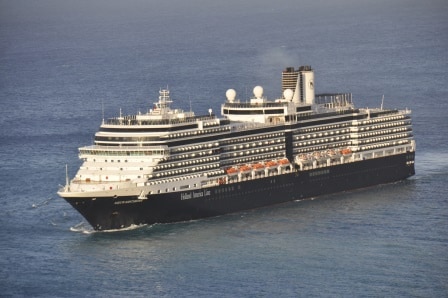
The Tamarind Rest. is the horizontal “visor” in front of the Funnels. The “bubble” is the elevated part on top of the bow.
Then the next step was the Vista Class (Noor, Ooster, Zuider & Westerdam) and here you can debate whether it is a completely new design or a drastic redesign of the R class. I opt for the latter as I find many similarities from the R class, not only in the front of the house but also in the back of the house. Shipyards always try to bring standard things in as it makes the design easier but is also more cost effective. Then the Signature Class (Eurodam, Nieuw Amsterdam) are a clear evolution of the Vista. The most visible changes are the Restaurant in front of the Funnels (Tamarind Rest), the extra cabin deck above the bridge and the stepped fore deck near the bow. This last part is called “the bubble” on board and is a very clever way of creating more operational space in the ship and by making a better observation deck for a good scenic view. Until now this was not soo important as the NA sailed in Europe and the Caribbean but this summer the ship will be going to Alaska and then it becomes an important focus point. None of the ships behave badly in bad weather but it each class “shakes” differently when it hits a wave and the impact travels through the ship. The Nieuw Amsterdam has a sort of delay in the “follow up” to a wave compared to the S class.
I spent my day learning the lay-out of the ship. Although the general flow is similar to the Vista Class, shipbuilders (probably urged by the company) have the tendency to put doors and lockers in places where another ship does not have them or have something else. For a deck or engine officer on board the first and most important thing to do is to find your way around as soon as possible. If there would be an emergency, knowing exactly where to go and how to go there via the fastest and safest way, is knowledge which could save lives, or the ship, or the person itself. So I had better be ready before my class arrives.
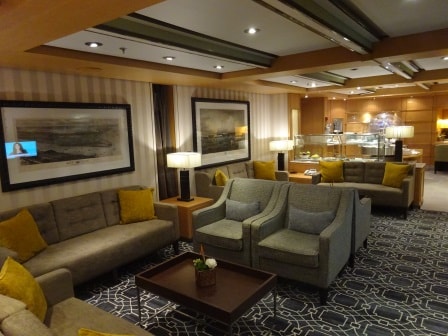
The sitting corner of the Neptune lounge. A buffet with Canapes and nibbles is located at the far end.
Today I walked the guest part of the ship and tomorrow I will go into the dungeons and the Engine Room. Then I will also let you see what is inside “the bubble”. With all the guests out and about, I could go into the Neptune lounge to take a few photos. The Neptune lounge is the special/private lounge for the Guests who occupy the big suites. It has its own concierge and there are free nibbles, snacks and coffee available all day long. The only company I know of who has something similar is Cunard but there the (Grill) lounge is connected to the Queens Grill and Princess Grill Suites and dining rooms but it does not have all the nibbles and canapé’s which HAL offers. (Although my wife and I do like the Queens Grill for dining………)
The Neptune lounge is served by a dedicated team for the suite guests only. They are part of the Front office staff and rotate on a regular basis. This afternoon they had it easy as no guests showed up, but it remained service with a smile, also for my blog readers as I promised them I would post the photo.
So tomorrow we will drop the hook at Gustavia roads at Saint Barthelemy with partly cloudy skies, a gentle breeze and temperatures of around 81oF or 27oC.

